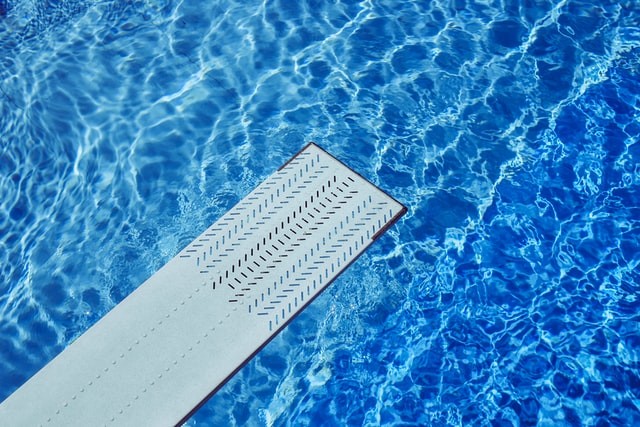Most people associate the smell of chlorine with a swimming pool. That is not surprising, because chlorine is used in almost all pools. Only you can do a lot more with chlorine. What exactly? I'll explain that to you later in this blog.
What exactly is chlorine?
Chlorine is not a naturally occurring free substance. The substance is quite common in certain compounds such as table salt. Chlorine is therefore frequently extracted from salt (sodium chloride) by electrolysis. At room temperature, chlorine is a very toxic yellow/green gas. Chlorine is widely used in the chemical industry for all kinds of applications as well as in general chemistry textbooks. After oxygen and fluorine, chlorine is the most electronegative element and is therefore usually used as an oxidizer. An oxidizer is a chemical that can take up electrons in a chemical reaction. In short, chlorine can easily be used in chemistry to produce other substances.
Chlorine or bleach? Is there a difference?
Popularly, chlorine and bleach are often referred to as the same product. This is just not the case. As described earlier, you can see chlorine as a basic product. Bleach is an end product. Bleach is used as the name implies, to bleach. The agent breaks down dyes and is therefore often used to bleach textiles or paper during production. Detergents often contain a small amount of bleach.
Examples of bleaching agents:
- Bleach, with sodium hypochlorite as active component
- Sodium Peroxide
- hydrogen peroxide
sodium hypochlorite
Chlorine is used as an oxidizer to produce, among other things, sodium hypochlorite. This substance is a green-yellow solid with an unpleasant odor. It is usually used as an aqueous solution, also known as chlorine bleach lye. This is used for:

- Killing harmful bacteria. The substance is included in the WHO List of Essential Medicines
- Purifying tap and swimming pool water
- For whitening paper
- A 5% solution in water (bleach) is widely used as a disinfectant for sanitary facilities
- In dentistry, a 2% solution is used to achieve cleaning and disinfection of the root canal during root canal treatments
- Purification of the drinking water by adding it to the groundwater
Distinctive smell of chlorine
Everyone knows the smell of chlorine, especially when you enter a swimming pool, the typical smell is immediately there. How does this smell arise and is it harmful?
The stronger a swimming pool smells of chlorine, the greater the contamination. According to the RIVM, whoever goes swimming leaves an average of one billion micro-organisms in the water. They are almost all completely harmless. Because chlorine binds with contaminants in the water, you get chloramines that give off the typical ‘pool odor'.
The much more intense chlorine fumes are caused by sodium hypochloride coming into an unusual proportion with the acids, which are added to the bathing water to maintain the disinfection activity. In swimming pools this is usually hydrochloric or sulfuric acid. The law has clear guidelines for this. Incorrect mixing, for example due to a defective pump or human error, can lead to the release of chlorine gas. But a defect in the alarm system can also cause problems. Severe exposure to the chlorine gas can lead to narrowing of the airways and shortness of breath. But irritations to eyes, nose and mucous membranes, such as red eyes, are also caused by chlorine gas. However, one is more sensitive to this than the other .
Toxic fumes
Chlorine or bleach should never be mixed with other substances. Now this applies to more chemicals, but chlorine or bleach is an easily available product and easy to use. In combination with other normal household products, chlorine is a very dangerous product.
Bleach and vinegar combine to produce chlorine gas, which even in small amounts can cause difficulty breathing, coughing and burning, watery eyes.
Bleach and ammonia produce a poisonous gas called chloramine . It causes the same symptoms as bleach and vinegar – accompanied by shortness of breath and chest pain.
Bleach and rubbing alcohol produce choloform. While it won't really make you pass out, the combination can be irritating and toxic.
Make it a rule not to mix anything with bleach except water. If you are looking for a chlorine-based special, please contact us or another professional. Then you know for sure that you get a safe and good product.
Other uses of chlorine
- Insecticides, paint, petroleum industry, plastics, pharmaceuticals, textiles and many other consumer products
- Certain chlorates and perchlorates are good oxidizers and are therefore often used in pyrotechnics . Think of the production of fireworks, but also in other processes where rapid or explosive combustion takes place, such as in the inflation mechanism of airbags, these chlorates are used.
- In organic chemistry, chlorine compounds are widely used as oxidizers and in substitution reactions
- Sodium chloride (table salt) is used as a seasoning in cooking
- Hydrochloric acid, a solution of hydrogen chloride (HCl) in water. Hydrogen chloride is a by-product of the production of PVC.
- Polyvinyl chloride (PVC), as in floor tarpaulin and (formerly) LPs. Production of this starts with the reaction of ethylene with chlorine (Cl 2 ) to form 1,2-dichloroethane (EDC). Then this EDC is reduced to VCM and hydrogen chloride (HCl). About 30% of the worldwide chlorine production is used for the production of VCM. PVC is created after polymerization of VCM
- Mustard gas, a toxic chlorine compound
